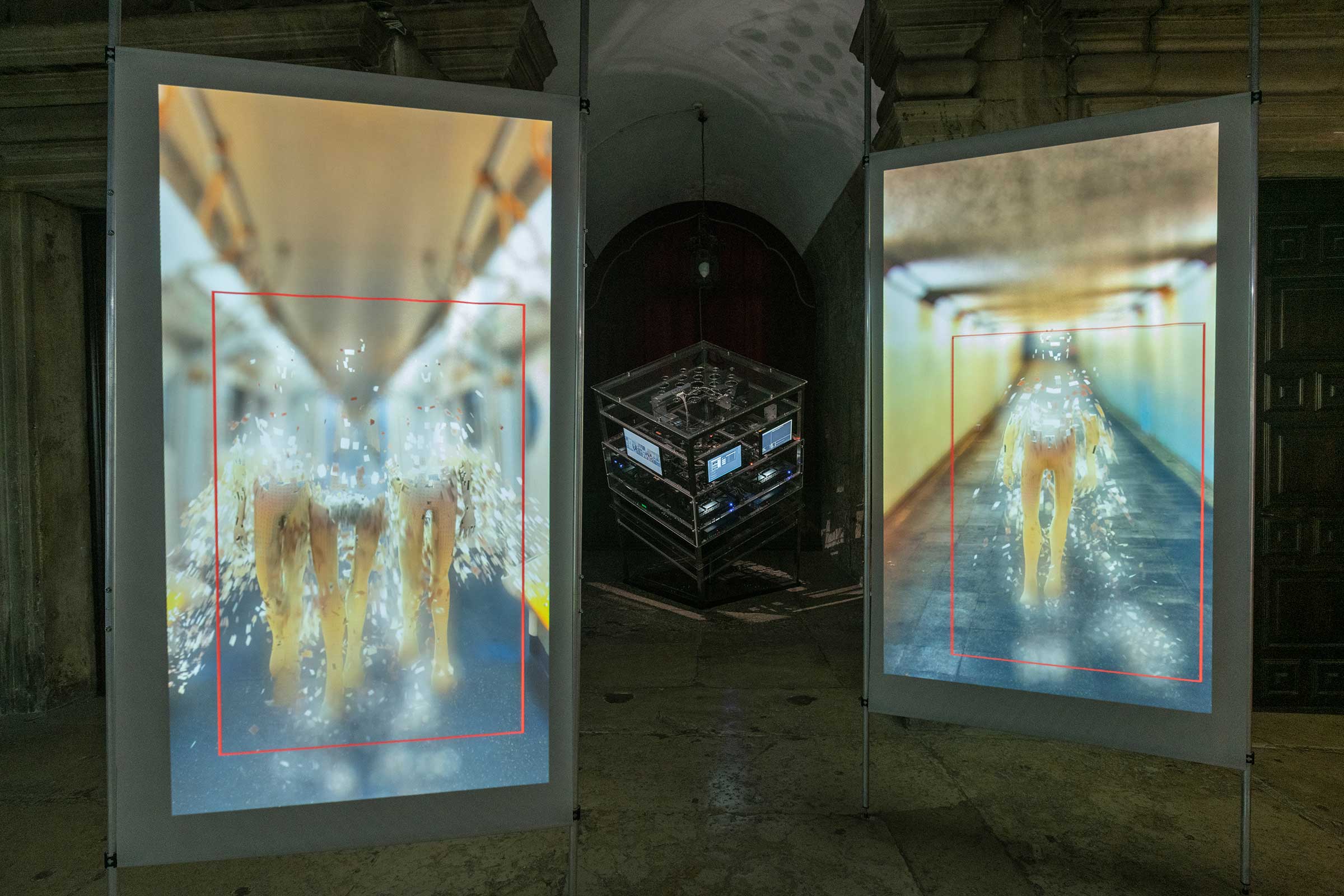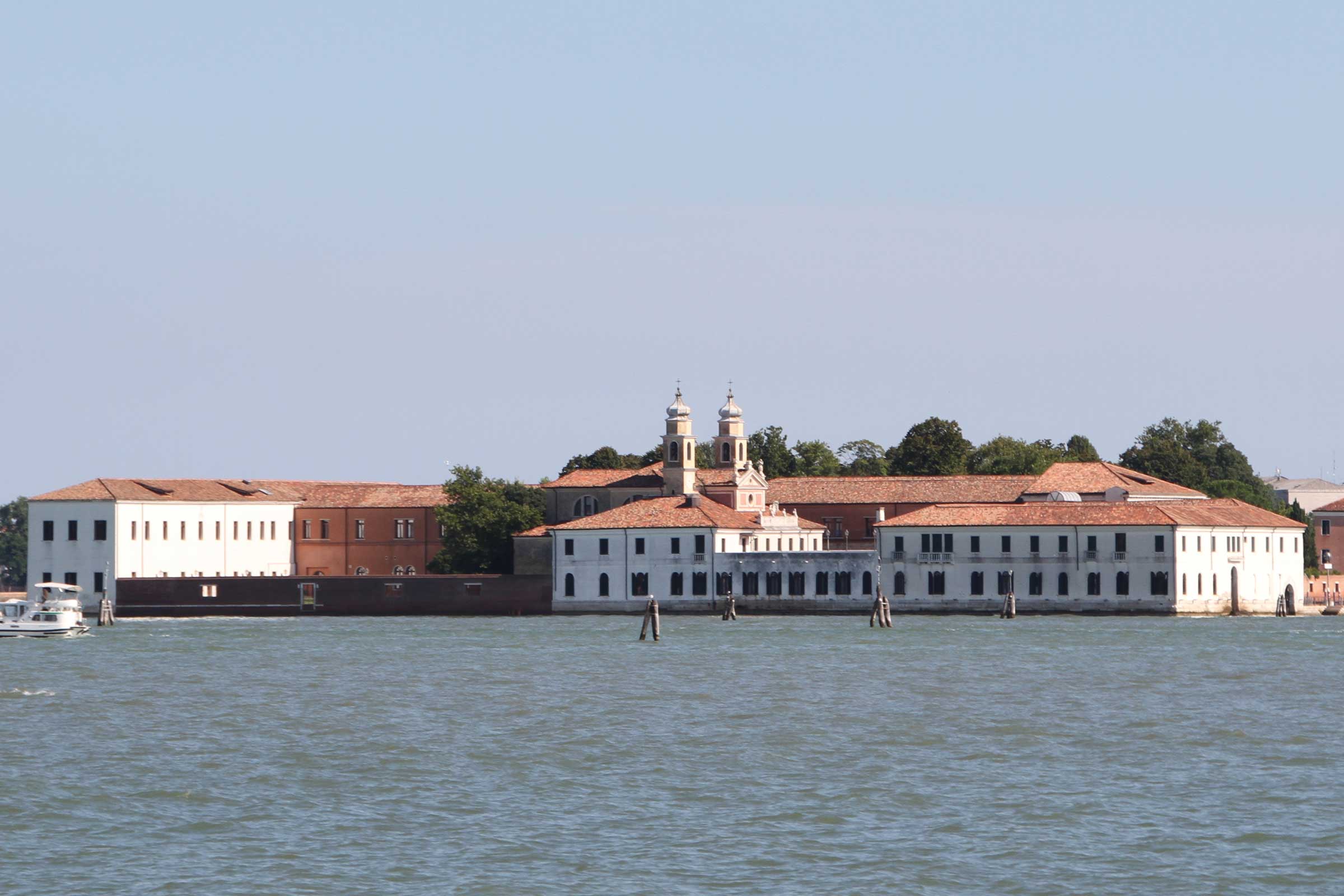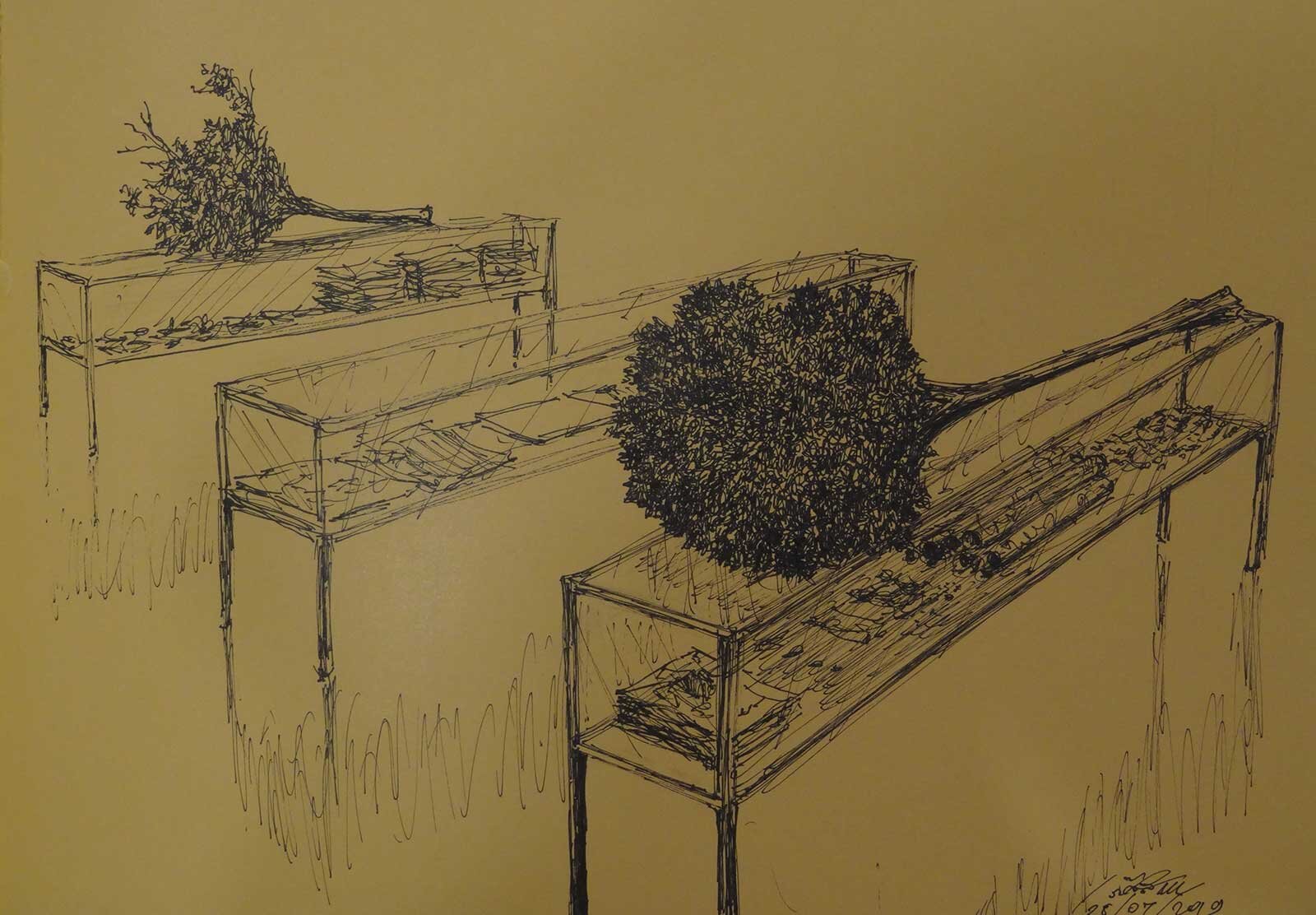Taiwan in Venice: Net Art Pioneer Shu Lea Cheang

The boundary-breaking artist speaks with us about how her installation at the Venice Biennale inverts modern technology to subvert, intervene and mobilise
Shu Lea Cheang with curator Paul B Preciado. Image ©TFAM
Design Anthology: What are some of the biggest changes you’ve observed in the digital world and online space since you created the pioneering work Brandon in 1998?
Shu Lea Cheang: I consider the online space to be a contested minefield claimed by all shareholders with their own interests at stake. In the 90s, I took up the notion of seeking Hakim Bey’s Temporary Autonomous Zone, and made a detour on the superhighway to homestead cyberspace. I declared the early-2000 the era of the post-net crash; in my current cycle of work, I’ve invented ‘BioNet’, which is set inside an occupied human body, to conspire an insurgency.
Can you tell us more about the research process behind 3x3x6? How did you investigate the prison structure, and how did you find the personal cases that would become the subject matter of the work?
The Taiwan Pavilion is located in an old Venetian prison: the Palazzo delle Prigioni, where the legendary libertine writer Giacomo Casanova was imprisoned in 1755. We used that context as a starting point and we set out to research subjects who were and are incarcerated for to their gender or sexual dissent. Casanova, Marquis de Sade and Michel Foucault were first included as historical case studies. As for the other seven cases, we sought to have more global and contemporary representation, including cases from China, Taiwan, Germany, France, Zimbabwe, the USA, Israel and Mexico. Throughout the research process, we have consulted legal and scholarly advisors and followed newsfeeds.
In your concept you state that ‘monitors and cell phone screens are the present-day cells that confine us.’ Can you explain more, and how does this relate to the exhibition’s physical context of a prison and the digital media (like 3D surveillance technology and ‘selfies’ used to create the work)?
The high-tech surveillance technology applied in today’s highly controlled society converts Bentham’s 18th century institutional panopticon into an omnipresent data panopticon. Networked cellphones and monitors are the modes of data transmission that bind us. In this context, I’ve used an app, social media and 3D surveillance cameras as part of my intervention.
At the Prigioni exhibition site, ten monitors will each show a short film about one of the ten cases of imprisonment — each monitor provides the frameworks for an incarcerated person and their case.
What is the relationship between the installation, film and app and that make up the exhibition?
My proposal was to create four gallery spaces in the Palazzo delle Prigioni with interconnected narratives, taking the public into the matrix of the prison-industrial complex and trans punk fictions.
In Gallery A, a tower structure embedded with ten projectors beams a mixture of morphing images, which have been collected from 3D surveillance cameras set on the staircase coming up to the gallery, along with modified selfie dance videos uploaded by users via the app, as well as portraits of the personas representing the ten case studies.
In Galleries B and C, the ten films are played on a loop, with their audio accessible via mobile phones and wired headsets. A cube structure in Gallery D will eventually expose the hardware and software behind exhibition’s control mechanism.
3x3x6 deals with themes of sex, gender, race, imprisonment and surveillance — how do you think these themes and the work will be received in the European context? Do you think it’s significant that an Asian country like Taiwan is presenting this conversation on the world stage?
In the European context, we drew references from Foucault’s Discipline and Punish: The Birth of the Prison and The history of Sexuality, and the exhibition curator Paul B. Preciado’s own Testo Junkie and Pornotopia: An Essay on Playboy's Architecture and Biopolitics.
The themes of sex, gender, race, imprisonment and surveillance are of global relevance. In Asia, Taiwan is one of the leading countries with regards to tolerance and celebration of the LGBTQ community. I give credit to the Taipei Fine Arts Museum for taking up such challenging subject matter by presenting 3x3x6.
As told to / Simone Schultz













